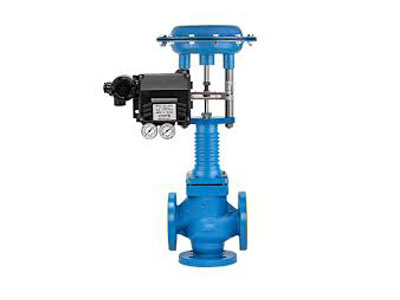Key Takeaway
A proportional relief valve is a type of safety valve that opens gradually in response to increasing pressure, providing controlled relief of excess pressure in a system. Unlike conventional relief valves that open fully at a set pressure, proportional relief valves modulate their opening to match the pressure increase, offering smoother pressure control.
These valves are used in applications where precise pressure regulation is critical, such as in hydraulic systems or gas pipelines. Their ability to provide gradual pressure relief helps prevent system shock and enhances overall safety and reliability.
Understanding Proportional Relief Valves
Proportional relief valves combine the safety features of traditional relief valves with proportional control capabilities. These valves provide graduated pressure relief, opening progressively as system pressure increases rather than suddenly at a fixed setpoint. This characteristic helps maintain stable system pressure.
The valve’s proportional control allows for precise pressure regulation within a specified range. As pressure rises above the initial setting, the valve gradually opens wider, providing just enough flow to maintain the desired pressure level. This prevents pressure spikes and system instability.
Advanced proportional relief valves often incorporate electronic controls for enhanced functionality. These controls enable remote adjustment of pressure settings and provide monitoring capabilities, making them ideal for automated systems requiring precise pressure management.

How They Differ from Standard Relief Valves
Proportional valves differ from standard relief valves in their operation. While standard relief valves open at a pre-set pressure and provide a one-time release, proportional valves continuously adjust the flow based on the input signal. This allows proportional valves to offer more precise control, ensuring smooth and gradual pressure adjustments.
In contrast, relief valves are primarily designed for emergency pressure release, whereas proportional valves offer real-time, dynamic control, responding to system demands without full activation. This makes proportional valves ideal for systems requiring ongoing control rather than simple pressure relief.
Proportional valves also offer more versatility, with the ability to control pressure, flow, and direction simultaneously, whereas standard relief valves are typically limited to pressure relief tasks only.
You May Like to Read
Applications and Use Cases
Proportional relief valves are used across a wide range of industries where precise pressure control is essential. Here are some key applications:
1. Hydraulic Systems: In hydraulic systems, proportional relief valves are used to protect pumps and motors from excessive pressure. These valves adjust the pressure dynamically, allowing for efficient energy use and smoother operation.
2. Pneumatic Systems: In pneumatic applications, proportional relief valves help maintain the proper air pressure within a system, ensuring that machinery operates within safe pressure limits. This prevents over-pressurization that could cause leaks or failures.
3. Automotive Industry: Proportional relief valves are used in automotive braking systems to control the release of pressure and maintain consistent braking force, improving safety and performance.
4. Industrial Manufacturing: In industrial manufacturing, these valves are used in machines and equipment where precise pressure control is needed to ensure product quality and operational efficiency.
5. Chemical Processing: In chemical plants, proportional relief valves help maintain safe operating pressures in reaction vessels, preventing over-pressurization that could lead to equipment failure or safety hazards.
Advantages of Proportional Relief Valves
Proportional relief valves provide several key advantages over standard relief valves, making them ideal for critical applications that demand high precision and reliability:
1. More Precise Pressure Control: Unlike standard relief valves, which offer simple on/off action, proportional relief valves allow for fine-tuned pressure regulation. This ensures that the system remains within optimal pressure levels, preventing over-pressurization and improving system performance.
2. Reduced Pressure Spikes: By gradually adjusting the valve opening, proportional relief valves minimize the occurrence of sudden pressure spikes. This leads to smoother system operation and reduces the risk of damaging sensitive equipment.
3. Enhanced System Longevity: The ability to control pressure more accurately and avoid sudden pressure changes helps reduce wear and tear on system components. This extends the lifespan of the machinery and reduces the need for costly repairs or replacements.
4. Improved Safety: Proportional relief valves help maintain stable pressure within safe limits, reducing the risk of accidents or failures due to over-pressurization. This makes them ideal for use in applications where system safety is a top priority.
Installation and Maintenance Tips
Installing and maintaining proportional relief valves correctly is crucial for ensuring optimal performance and extending their lifespan. Here are some tips for installation and maintenance:
1. Proper Sizing: When selecting a proportional relief valve, ensure that it is correctly sized for the system it will be used in. Using an undersized or oversized valve can lead to inefficient performance and potential damage to the system.
2. Follow Manufacturer Guidelines: Always refer to the manufacturer’s instructions for installation, as they will provide specific details on how to set up and calibrate the valve for your application.
3. Regular Calibration: Periodically calibrate the valve to ensure that it continues to provide accurate pressure regulation. Calibration should be done according to the manufacturer’s recommendations to maintain system performance.
4. Check for Leaks: During regular maintenance checks, inspect the valve for any signs of leaks, as this can indicate wear or damage. Promptly address leaks to prevent further damage to the system.
5. Clean and Lubricate: Keep the valve clean and lubricated to prevent debris buildup that could obstruct the valve’s operation. Regular cleaning and maintenance help prevent malfunctions and ensure long-lasting reliability.
Conclusion
A proportional relief valve is a vital component in pressure control systems, designed to release excess pressure gradually. Unlike traditional relief valves, proportional relief valves offer variable pressure relief, providing more precise control.
These valves are ideal for applications requiring smooth pressure regulation, such as hydraulic systems and process industries. Understanding their operation and benefits is crucial for selecting the right valve for specific applications, ensuring safety and efficiency in pressure management.
